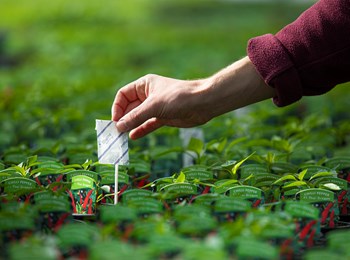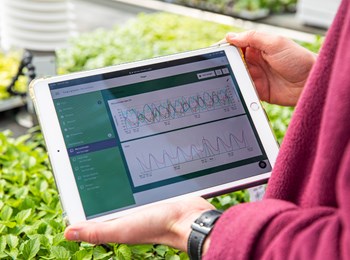
Optimise propagation in five steps
In-house propagation has always had its upsides and downsides. A few things make it appealing: the potential for improved quality and reliability, reducing the risk from pests and disease and improved flexibility to meet demand.
However, there is the costly investment to create a propagation space, labour requirements, the use of equipment and the industry loss of specialist skills that make propagation less appealing.
Here are our five key points to keep in mind for successful propagation.
Start strong
Nursery crops can propagate many healthy plants but having stock plants allows for a greater level of control and ultimately better quality.
Choosing a healthy stock plant from which to take cuttings, one that is true to type and propagates well, is a key first step. The stock plant needs to be large enough that cuttings don’t harm it. The donor plant shares both its good and bad characteristics, so choose wisely.
Find the best stems for cutting
Timing and the type of cutting used impact the rooting. Semi-ripe and softwood cuttings can be slower rooting than others. Stem cutting remains the most common form, most being nodal although many plants root well from an internodal cut.
Often, it’s possible to make several individual cuttings from the same section of stem material. There are several other forms of cutting such as heel cuttings and basal, but do research before you head on this road to find what is most effective for your crops. Newer growth is easier to root than woody or older stems.
Look for a stem with a node along the stem where a leaf or flower bud attaches. This is where new roots emerge. The cutting needs leaves for photosynthesis to generate energy, but too many leaves take energy from rooting, and rooting is what you’re after at this stage.
Use a rooting powder
Some plants root easily but many growers find a rooting powder stimulates root initiation and improves the propagation.
There are several different rooting powders on the market depending on the type of cutting. Use rooting powders to stimulate root initiation and production.
The Rhizopon range is market leading with different strengths to meet the needs of individual crops.

Rhizopon AA Rooting Powder 0.5% 500g
£69.49 Ex VAT
Prevention is better than a cure
Cuttings are prone to disease. Damping-off diseases for young plants present a significant risk.
Proper hygiene and irrigation management go a long way to prevent issues, but integrating a product like T34 to the growing media reduces the risk.
T34 contains Trichoderma asperellum, which colonises the rootzones.

T34 Biocontrol Fungicide 250g
£115.51 Ex VAT

T34 Biocontrol Fungicide 500g
£188.10 Ex VAT
The perfect environment
Cuttings are highly sensitive to their environment. Cold and damp conditions delay rooting, increase failure rates and the likelihood of disease and nutrient deficiencies.
Optimum conditions vary from crop-to-crop, so additional, specific research is always needed, but generally, high humidity around 80-90% and temperatures in the low 20°C are best.
These conditions are, of course, ideal for pest and disease development so having a specific IPM programme for your propagation area is key to a successful crop.
Other propagation essentials

Subdue Fungicide 250ml
£195.39 Ex VAT

Proplant Fungicide 1lt
£68.89 Ex VAT

